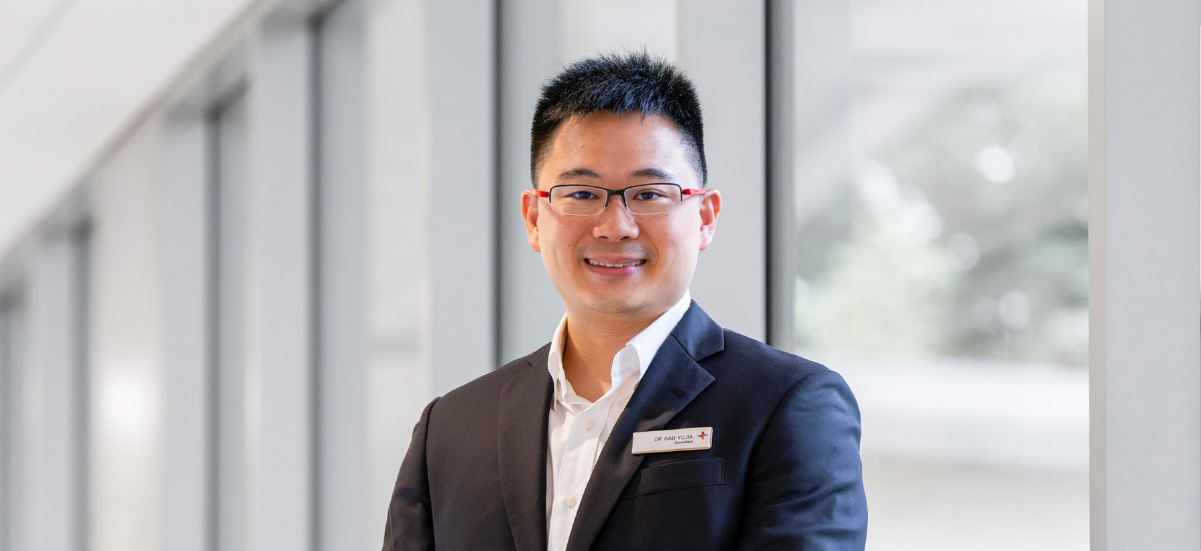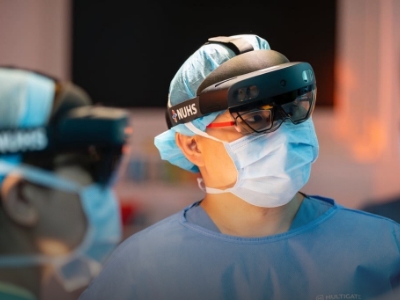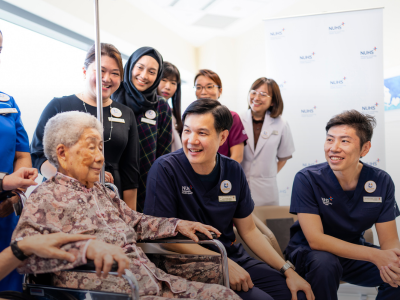Published on 11 July 2024
Dr Gao Yujia and his team of tech innovators are pushing the frontiers of medicine with digital innovations that could greatly improve patient outcomes.
They call it a digital twin — a virtual 3D anatomical replica that is dynamic, and precisely mimics the shape and structural behaviour of an organ. This advancement will enhance pre-surgery planning and intra-operative navigation with greater precision, leading to more accurate and effective treatments. In the future, this has the potential to be personalised with a patient’s specific biomarkers, down to the molecular level, to predict their healthcare outcomes.
One of the leads behind the project is Dr Gao Yujia, a liver and pancreatic surgeon at National University Hospital (NUH) and Assistant Group Chief Technology Officer at National University Health System (NUHS). In addition to clinical work, Dr Gao also has special interests in health informatics, artificial intelligence, data transformation, medical technology and education. Perhaps his attraction to medical technology stems from his family of engineers.
While the digital twin holds great potential in the future, its foundation is based on HoloMedicine which is an innovative mixed reality technology.
Tech that enhances the 3Ps of medicine – predictive, precise and personalised
HoloMedicine in NUHS started back in 2019. Under Dr Gao and a team of in-house data scientists, software developers, network architects and tech talents, it has now evolved into a full-fledged programme at NUHS.
Recently, HoloMedicine was also successfully deployed for paediatric liver transplants, where an adult liver was given to a child. The technique of utilising mixed reality imaging was used to compare the child’s CT scan and the CT scan of the adult donor liver. This played an important role in accurate pre-operative estimation of the adult liver size into the child’s body.
“HoloMedicine leverages mixed reality to interact with virtual objects superimposed onto the real world, allowing for unparalleled accuracy in pre-surgical planning,” explained Dr Gao.
With this near-pinpoint precision, surgeons can minimise the risk of injuring other structures, thereby reducing potential complications, risk, operating time and ultimately improving the patient’s overall journey.
Research that can benefit a whole population
On a macro level, research and development of the digital twin can be translated into a population health prediction model. Using available data, an “average Singaporean” can be modelled with their health risk factors. This technology can predict how this average individual might progress in the future, including their risk of developing conditions like heart attack, stroke, liver failure, and kidney failure.
Building on that, the “average Singaporean” digital twin model could also be used to predict the potential impact of a government policy on healthy living. For example, if the prevalence of diabetes can be reduced by five per cent, how would that look like 15 years into the future?
According to Dr Gao, the combined precision, predictability and personalisation of HoloMedicine and digital twin technology can be used for both medical training and education, as well as surgical navigation. For example, in cancer treatments, tumours that are very small and deeply embedded can now be accurately excised, which was previously challenging. This minimises the reliance on other imaging modalities that may have inconsistencies in accuracy, ensures surgical precision, and improves patient outcomes.
With the help of a special 3D MRI elastography scan, a personalised advanced computer model of the patient’s organ can be built, retaining its unique biomechanical properties. This would greatly enhance the functionality of the existing digital twin models.
Dr Gao is especially hopeful about the future phases of MedTech, especially the work being done by Dr Daniel Huang, Consultant, Division of Gastroenterology & Hepatology at NUH. Dr Huang’s research could help the digital twin predict the organ’s behaviour such as treatment response after liver transplantation, and expected recovery based on health data from the donor and the recipient. An even more advanced phase will feature a multi-organ digital twin ecosystem capable of predicting interactions between all organs.
In consultation with Dr Gao Yujia, Consultant, Division of Hepatobiliary & Pancreatic Surgery, Department of Surgery, NUH; Consultant, Adult Liver Transplantation Programme, NUCOT, NUH; and Consultant, Division of Hepatobiliary & Pancreatic Surgery, Department of General Surgery, NTFGH; Assistant Group Chief Technology Officer, NUHS.




